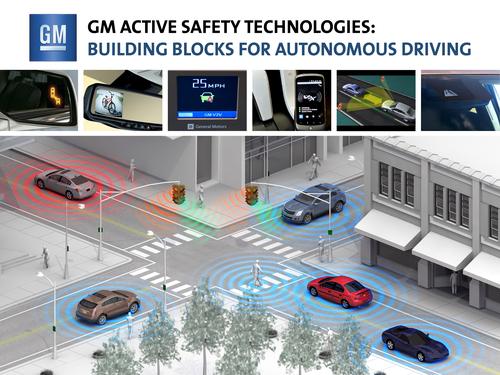November 21, 2011

Most of us dream of eliminating the time-consuming daily chore of driving our cars to the office. But if you could sit in the back of your car and work while it drives you to the office, would you do it?
Surprisingly, that's a question you may have to answer one day. Engineers from General Motors Corp. said recently that fully autonomous vehicles will be ready to hit the streets in 2020, and that automakers will be able to offer the technology if consumers want it.
"We believe that the world [of driving] will be autonomous on demand," Alan Taub, vice president of global research and development for GM, said in an interview with Design News. "There will still be fun-to-drive situations. People do enjoy driving, but not all the time."

Taub says that many of the technologies for self-driving vehicles are already in place, and that the ones that aren't will be available by mid-decade. He cites four pillars of the fully autonomous vehicle: Full, 360 degrees situational awareness; autonomous braking and steering; global-scale, real-time digital maps; and "driver-partially-in-the-loop" technology, which would enable drivers to share the chores with the car.
"Today, we can already do it in low-chaos environments," he told us. "If you try to go to Bombay, with very heavy congestion, people not driving in their lanes, and a mixture of pedestrian and vehicle traffic, our ability is limited. On the other hand, if you go to a freeway, where you only have to recognize vehicles and stationary objects, we can do that."
If you think that sounds a little bit too much like science fiction, then consider the DARPA Challenge events. In those events, which took place in 2004, 2005, and 2007, autonomous vehicles used cameras, radar, lasers, and tons of computing power to make their way across urban and desert courses. In 2004 and 2005, they drove over sand dunes, through valleys, along highways, and over rivers. They had to spot lines of barbed wire and so-called tank killers -- pieces of angle iron laid across the desert floor to stop their progress. And they prevailed. In 2005, five vehicles finished the 132-mile course without a shred of help. In 2007, in an urban environment, six vehicles finished.
Back then, vehicles won by employing numerous Pentium blade-type computers, digital signal processors, and field-programmable gate arrays, all of which "fused" the information from scores of sensors. The engineers who put the systems together sometimes referred to the trunkloads of computing equipment as "supercomputers on wheels."
About the Author(s)
You May Also Like



